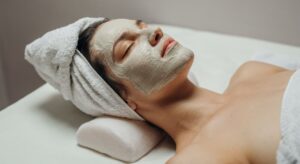Your skin responds to changing weather. Dry air, low humidity, and cold wind can suck all the moisture out of your skin and leave it dull and lifeless. The condition gets worse for some people who experience flaking, cracking, or even eczema.
Understand Your Skin’s Anatomy
The outermost layer of skin is known as the stratum corneum that holds the moisture into the skin. It does not only hold the water but protects the skin from harmful chemicals and germs by keeping them outside. Keratinocytes are held by filaggrin and ceramides that form a thick barrier. During the fall or winter season, humidity level falls, and water starts to evaporate from the stratum corneum, leads to dry and flaky skin.
How to Maintain Skin Hydration in Fall & Winter
We are here with some simple and easiest tips to keep your skin healthy and comfortable during the colder and drier months.
-
Avoid Frequent Bathing
Everybody loves to take hot showers in winters, but do you know what it does to your skin? Hot water can break the lipid barrier that can lead to excessive loss of skin moisture. Use the lukewarm water instead and do not exceed your bathing time for more than five minutes.
-
Avoid Harsh Chemicals
Bar soaps and alcohol-based cleansers can lead to dry skin. Scented Products can cause irritation. Choose a fragrance-free body wash. Rub it to your sweat or smell-producing areas like neck, underarms, feet, and groin. Use a very little amount on your trunk and limbs because they tend to get less dirty.
-
Go for a Thicker Moisturizer
After taking shower, pat dry your skin and moisturize it right away. Water-based moisturizers do not work for cold and dry months. Choose an oil-based formula. If you are prone to skin breakouts, find lipids containing lotion or cream that will help to seal moisture without clogging your pores.
-
Do not Forget the Sunscreen
Sunscreen is necessary for your skin all year round. Ultraviolet radiations from the sun have negative effects on your skin including dryness. Apply a broad-spectrum sunscreen with a minimum of SPF 30 to your hands and face for about 30 minutes before going outside. Reapply it if you stay outside for longer.
-
Avoid Excessive Exfoliation
Exfoliation helps to remove dead skin cells and debris from the pores. It smoothens your skin texture and brightens the complexion, but excessive exfoliation can make your skin dry and flaky. Choose a chemical exfoliant like polyhydroxy acids in place of a physical exfoliant. Large and irregular particles in physical scrubs can cause micro-tears in the skin that lead to dryness, itching, redness, and sensitivity.
-
Make Some Changes to Your Daily Skincare Routine
You need to make some changes to your daily skincare routine in cold and dry months. Skip using facial toners because they absorb oil and mattify your skin. Use a hydrating facial mist instead. Layer it up with moisturizing day or night cream. If you experience dry skin patches, apply dermatologist-recommended skin ointments to affected areas.
-
Take care of Your Hands
The skin on your hands is thinner as compared to most parts of your body. Fewer oil glands make it difficult to keep them moisturized. Use hand cream and cover them with gloves.
*Information in this article is not medical advice and may not be factually accurate. It is intended for entertainment purposes only. Consult with a physician before attempting any tips in this blog post and to get the most up to date factual data about any procedure or treatment.














